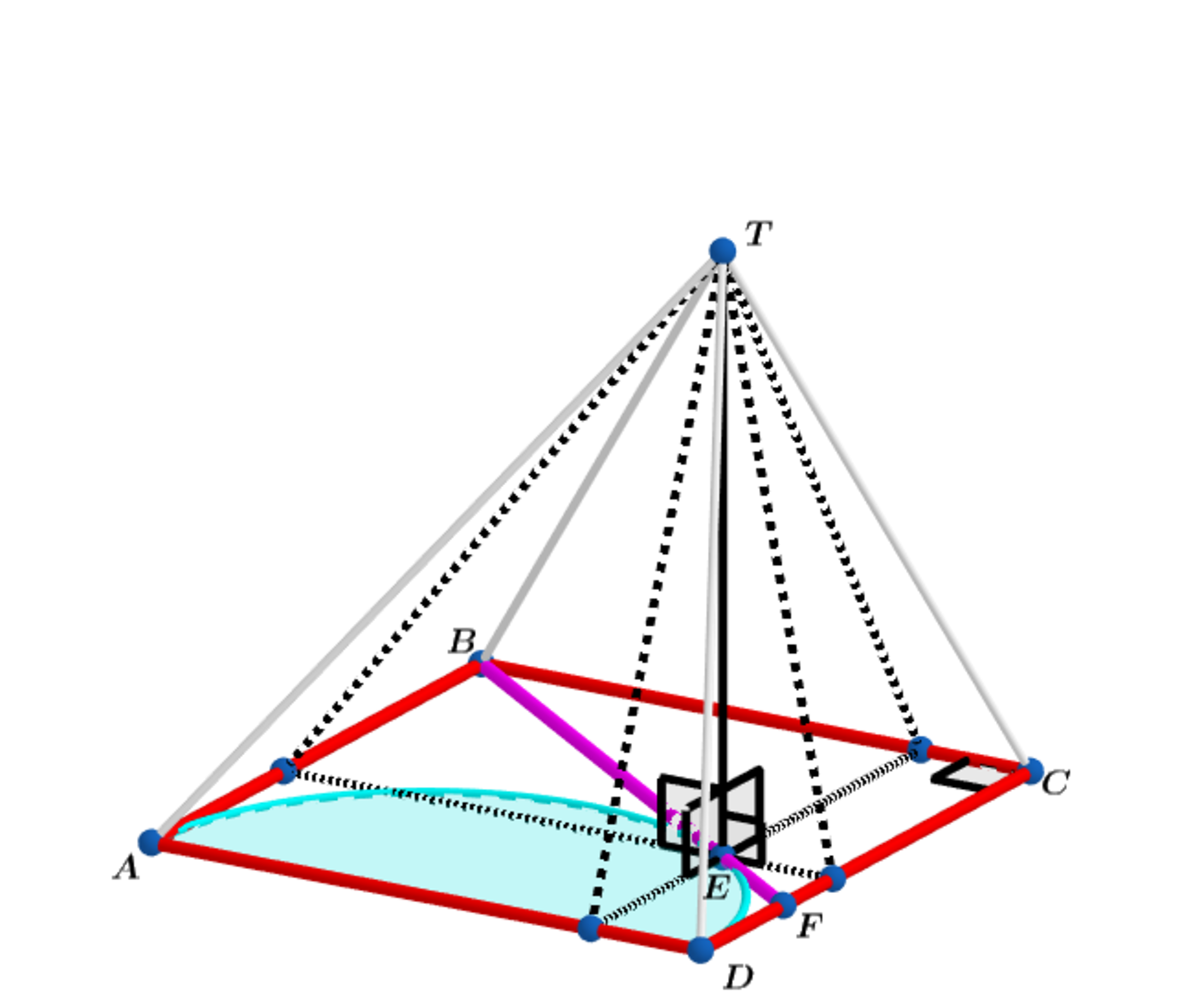Oblique Square Pyramids!

A semicircle is inscribed in square base as shown above and is tangent to the semicircle at point .
Let the height of the oblique square pyramid and be the lateral surface area.
If ,
where and are coprime positive integers, find .
The answer is 140.
This section requires Javascript.
You are seeing this because something didn't load right. We suggest you, (a) try
refreshing the page, (b) enabling javascript if it is disabled on your browser and,
finally, (c)
loading the
non-javascript version of this page
. We're sorry about the hassle.
To find point E ( x , y ) of square base A B C D :
Let a be the length of a side of the square A B C D .
( x − 2 a ) 2 + y 2 = 2 a 2 ⟹ 4 ( 2 x − a ) 2 + y 2 = 4 a 2 ⟹
x 2 − a x + y 2 = 0 ⟹ y = x ( a − x )
m B E = x x ( a − x ) − a ⟹ m ⊥ = m P E = 2 x − a 2 x ( a − x ) =
− x ( a − x ) − a x ⟹ 2 a x − 2 x 2 − 2 a x ( a − x ) = a x − 2 x 2 ⟹
x = 2 x ( a − x ) ⟹ x 2 = 4 a x − 4 x 2 ⟹ x ( 4 a − 5 x ) = 0 and x = 0
⟹ x = 5 4 a ⟹ y = 5 2 a ⟹ E : ( 5 4 a , 5 2 a )
Using E : ( 5 4 a , 5 2 a ) we obtain:
U E = 5 2 a ⟹ R E = 5 3 a and S E = 5 4 a ⟹ E Q = 5 a
⟹ S 1 = 5 2 9 a , S 2 = 5 2 6 a , S 3 = 5 3 4 a and S 4 = 5 4 1 a ⟹
A s = a 2 ( 1 0 2 9 + 2 6 + 3 4 + 4 1 ) ⟹
A □ A B C D A s = 1 0 2 9 + 2 6 + 3 4 + 4 1 =
ω α + β + γ + λ ⟹ α + β + γ + λ + ω = 1 4 0 .